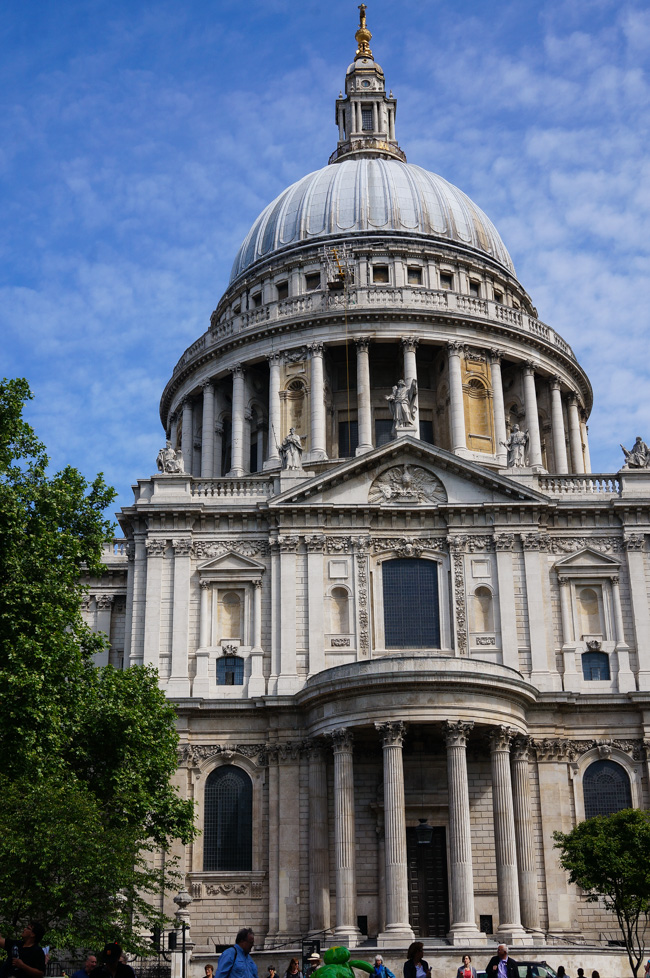 Uncategorized
Uncategorized
◦
When we decided to go on our great Europe adventure this past year, I started to compile a list of resources that I knew would be helpful as I jumped into the flurry of planning. It took a lot of scouring the web, asking friends who have quite a bit of traveling under their belts already, and checking out books from the travel section of the library. Below you’ll find some of my favorite apps and websites I used while planning the trip as well as ones that were helpful for us while overseas!

Skyscanner was hands down the reason we found such amazing deals on our flights. When we decided to go to Europe, we didn’t have a hard and fast idea of where we wanted to go, so we let Skyscanner decide for us! No, it doesn’t book automatically for you, but it does tell you where you can fly cheapest, and if you’re able to be flexible on dates, chances are you’ll find some stellar deals! We were flexible on our incoming and outgoing cities, so it turned out that it was cheapest to fly into Manchester, UK and out of Paris, FR. That was perfectly fine with us, because they were both countries we were interested in visiting and so once we booked our flights, we filled in the rest of our route, knowing our start and end points!
We flew budget airlines RyanAir and Easy Jet for our quick flights from London to Rome and then again from Venice to Paris. We had no negative experiences with either of these airlines, other than it’s crucial for you to know your baggage size going in, especially if your luggage is larger than what will fit in the carry on size bin. They will actually make you stuff your bag in the carry on sizer, so be precise in measuring your luggage if you don’t want to be hit with a large fee at the airport for checking your bag.

Airbnb was our choice of lodging for this vacation, as well as the majority of our other vacations. We’re also hosts on Airbnb here in Austin, so it’s obvious we’ve fallen in love! If you’ve never used Airbnb before, there are a few things you need to know. It’s not a hotel. That probably seems like an obvious statement, but if you’re checking into someone’s home with the thought that it will have all the amenities of a hotel, you’ll have a hard time feeling comfortable. With that being said, it might not have luxury linens or a private hot tub, but it will have character and the feel of home, you’ll make new long-lasting friends who will give you lots of great sightseeing tips, and you’ll oftentimes be surprised with breakfast! Staying in Airbnb’s can also dramatically decrease your lodging budget. We spent an average of $41 per night on our lodging, which gave us more leeway in our budget for food and other activities.
We did two nights in a hotel on the final leg of our journey in Paris. We opted to stay close the Charles De Gaulle Airport which made for an expensive ride into Paris, but then we were able to get to the airport quickly for our flight. I would recommend paying a bit more to stay downtown, as you’ll end up using that money for train fares getting to and from the airports anyways. It will also save time and allow you to do more sightseeing rather than spending 2 hours a day on the train.
If you haven’t used Hotwire’s secret deals before, I highly recommend them! The site allows you to sort by star rating and general location and it provides highly discounted hotel room rates. The downside is that you don’t know which exact hotel you’ll be staying at until you book, but as long as you’re flexible and are just looking for a great deal, it’s a great option.

City Maps 2Go is a helpful mobile app that allows you to download city maps on WiFi before you leave. The maps contain tons of specific landmarks and restaurants plus provide an extensive city street map. We used this in all of our cities and were able to avoid being completely lost in places like Venice where it’s nearly impossible to make it to your destination without getting lost!
Google offline maps can be used in a similar manner to City Maps 2 Go. We used google in one of the cities we visited but I was a bit nervous the whole time because the navigation arrow kept flashing, giving me nightmares that we were using data internationally and would have a giant cell phone bill when we got home! Everything ended up being fine, but personally I would rather stay away from the possibility of accruing data charges.
I didn’t discover Rome2Rio after coming home from Europe, but it’s a service that would have been incredibly helpful. It’s a site that allows you to plug in your destination and will tell all the possible methods of getting to that place, along with times and prices for each method. So, for example, if you need to travel from Florence to Venice, it will tell give you options for bus, train, plane, car rental, etc. This would have been helpful for me because I tend to go with the cheapest option, but don’t remember to consider the other variables like time spent traveling and other tacked-on transportation costs.

Tripcase, tripcase, tripcase!!! So incredibly important. It’s like a travel itinerary on steroids. You can input all of your flight information, confirmation numbers for train or bus, any stops/attractions you want to hit, etc… It even notifies you if your plane is delayed and provides an offline version of your itinerary so you have it with you at all times. I chose to print our itinerary as well as have it on my phone, just in case of emergency. You can share itineraries with your travel mates and they have the ability to add to it as well, which makes it perfect for group planning.
Next time we’ll cover all things packing. What’s actually necessary for an international trip, what you can leave at home, which bags we love, recommended shoes for lots of walking, and dealing with cross-cultural expectations for clothing.